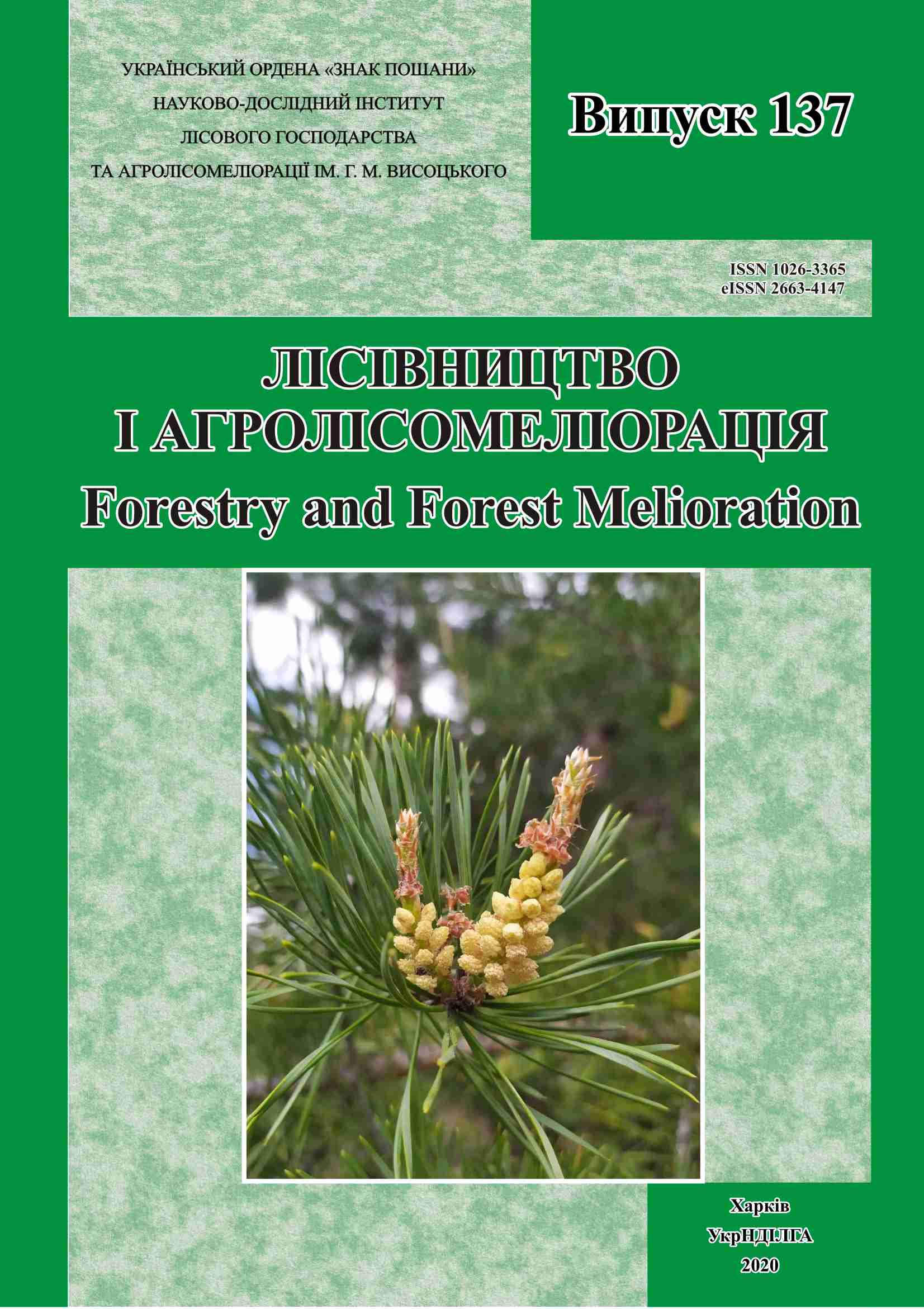Abstract
Introduction
One of the key conditions for further development of the forest sector in Ukraine is the transition to close to nature forestry, which provides, in particular, the formation of stands with an optimal balance of productivity and resilience based on natural regeneration. Currently, the main way to increase the resilience of pine forests is growing mixed deciduous-pine stands of complex structure from native forest-forming species. For these reasons, objective current information on the health condition and reforestation potential of natural regeneration of Scots pine after strip felling of the main use in the conditions of Western Polissya is extremely important.
Materials and methods
The object of the research were experimental and production plots with different options for natural pine regeneration on the felling sites after strip felling conducted in 2014–2015 with felled strip width of 50 m. The plots situated in Troyanivske Forestry in the Gorodotske Forest State Enterprise, Volyn Region. The field materials were collected in accordance with the generally accepted forestry and mensuration research methods. We assessed natural regeneration by continuous accounting of all individuals of available tree species. The natural regeneration success was estimated by the URIFFM scale and the table of groups of natural regeneration success of pine and oak for Western Polissya. The study was conducted on 6 sample plots with an area of 0.9–2.2 hectares, laid on 5–6-year-old felling sites.
Results
The study has shown that after strip felling in the autumn-winter period and activities to promote natural regeneration when furrows are made every 2 m, a large amount of seeds from left pine seed trees or from the forest walls surrounding the felling area fell into these furrows. Here, as well as in the sites mineralized during the felling, a large number of Scots pine seedlings emerged in the spring of the first year. Accounts for 2016 showed that 2-year-old felling sites were intensively occupied by pine self-seeding mainly concentrated in the furrows. In particular, in the plots where partial forest plantations had been established additionally, the density of 1–2-year-old self-seeding pines reached 50 thousand trees per ha. In the plot, where targeted reforestation measures were not applied at all, abundant pine self-seeding was also found. In 2020, the highest ratio of natural pine regeneration success was recorded at all study sites, the density of which was 9,200–17,300 trees per ha at the age of 5–6 years.
Conclusions
Strip felling in pine stands in the wet oak-pine relatively infertile forest type provides vigorous and effective pine regeneration in a natural way. The density of 5–6-year-old viable natural undergrowth of pine on felling areas is 9,200–17,300 trees per ha. The effectiveness of natural regeneration has been assessed as “good” according to URIFFM scale. The part of vigorous advance regeneration of pine makes 65–85 %, its location on the plot is uniform (the occurrence exceeds 80 %). The available number of pine seedlings should provide a formation of new pine stands after strip felling. Consistent measures aimed at promoting emergence of pine seedlings are necessary in case of a lack of mineralization. However, it is inappropriate to establish planted forest stands after strip felling, even its partial type.
1 Fig., 1 Table, 18 Refs.
Key words: Pinus sylvestrys L., natural regeneration success ratio, clear felling with narrow coupes, main-use felling.

This work is licensed under a Creative Commons Attribution 4.0 International License.
